Blackened wood, modern trim.
France.
ca. 1860-1867.
h. 19,68 in. ; w. 17,3 in.
This pair of Neo-Pompeian stools, reupholstered in modern fabric with antique-inspired patterns, belongs to a trend that, under Napoleon III, had a very short life : a Pompeian style, more aesthetic than historic, often blending Greek, Etruscan, and Roman elements indiscriminately. The ‘House of Diomedes’, a Pompeian villa that Prince Napoléon-Jérôme, nephew of Napoleon I and cousin of Napoleon III, had built on Avenue Montaigne, is the perfect symbol of this fleeting trend. Pierre Devinoy and Madeleine Jarry, discussing the furnishing of the villa, write :
‘Around 1860, Charles Rossigneux, the architect for Prince Napoleon, designed for his Pompeian villa on Avenue Montaigne a very archaeological Roman-style furniture set, made from antique molds. But the new style left no lasting mark ; Neo-Greek armchairs, chairs, and guéridons were only seen at exhibitions or in artists’ boudoirs.’
Historian Jacqueline Viaux confirms :
‘This experiment was short-lived. Despite its taste for erudition, Second Empire society did not wish to sacrifice its comfort and well-being to archaeological demands.’
The villa was, in fact, designed by Alfred Normand, with Charles Rossigneux assisting in the interior decoration. It was designed in 1856 and inaugurated in 1860. Henri-Auguste Fourdinois appears to have supplied most of the furniture, and alongside the ‘very archaeological’ pieces were other elements of a more ordinary style, the kind of which any other bourgeois of the Second Empire would have. The decline of this highly elitist trend — and a dispute with his wife — led Napoléon-Jérôme to put the villa up for sale as early as 1866. It was purchased by a consortium of investors, including the famous Arsène Houssaye and Ferdinand de Lesseps, who saw the 1867 Universal Exposition as an opportunity to open it to the public — and perhaps increase its market value. All the furniture had disappeared, moved to an unknown location. The Napoleonic objects were sent to the Palais Royal. It is also unknown whether the furniture bore any stamps or inventory marks.
At the Musée des Arts Décoratifs, there is a drawing of a chair with moldings exactly like those on these two stools. It was mistakenly attributed to ‘Duval frères’ by Devinoy and Jarry : ‘Duval frères’ were actually upholsterers, designing the chair’s upholstery, not the chair itself. Like Fourdinois, they exhibited — and were awarded — at the 1867 Universal Exposition, the very exhibition where Ferdinand de Lesseps and Arsène Houssaye opened the ‘House of Diomedes’ to the public. It was also the only exposition where the ‘short-lived’ trend of Neo-Pompeian furniture was displayed. A guide to the event, under the title : Curiosities of the 1867 Universal Exposition, reads : ‘...this year the fashion is Pompeian style, Etruscan style, Egyptian style...’
All these elements support a dating between 1860 and 1867 for this extremely rare furniture, for which the only documents, apart from the ‘Duval frères’ drawing, are a few photographs taken at the Pompeian villa on Avenue Montaigne, kept at the Bibliothèque nationale de France. There is also the famous painting by Gustave Boulanger, The Rehearsal of The Flute Player and the Woman of Diomedes at Prince Napoleon's, painted in 1861 and now at the Musée d'Orsay : it captures a klinê or sella with the same turned feet and discs, blackened wood of the same craftsmanship, on which a actor rehearses his lines, reclining.
Sources
Hippolyte Gautier, Les Curiosités de l'Exposition universelle de 1867, avec six plans, Paris, 1867 ; Victor Champier, ‘O. Roty à Ch. Rossigneux. Ch. Rossigneux à O. Roty’, dans Revue des Arts décoratifs, vol. XVIII, Paris, 1881 ; Léon Deshairs, ‘Charles Rossigneux, architecte-décorateur (1818-1907)’, dans Gazette des Beaux-Arts, t. XL, Paris, 1908 Émile Le Senne, ‘Notes sur la villa pompéienne de l'avenue Montaigne’, dans Bulletin de la société historique et archéologique des VIIIe et XVIIe arrondissements de Paris, Paris, 1912 ; Maurice Allem, La Vie quotidienne sous le Second Empire, Paris, 1948.









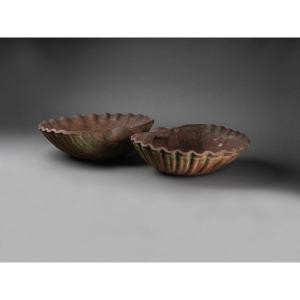
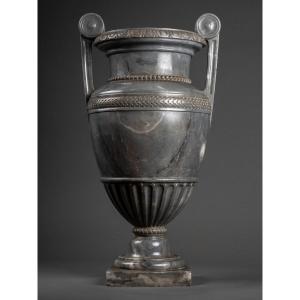


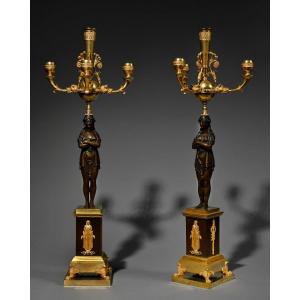





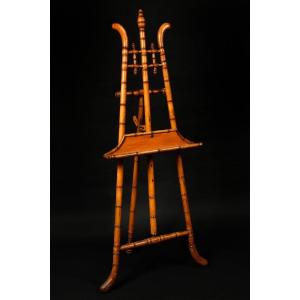



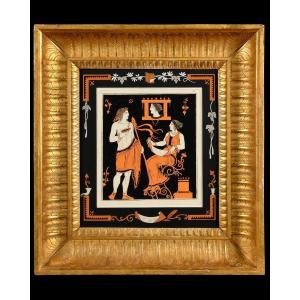

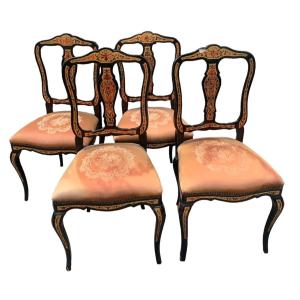
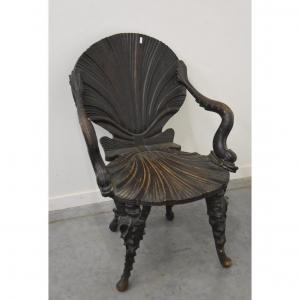





 Le Magazine de PROANTIC
Le Magazine de PROANTIC TRÉSORS Magazine
TRÉSORS Magazine Rivista Artiquariato
Rivista Artiquariato